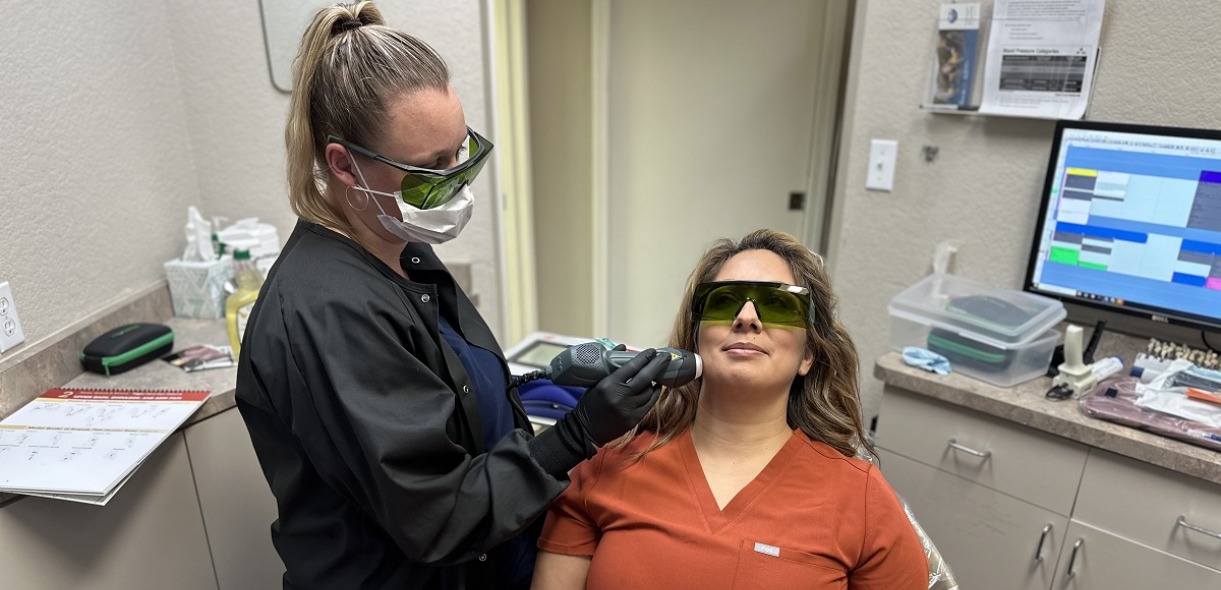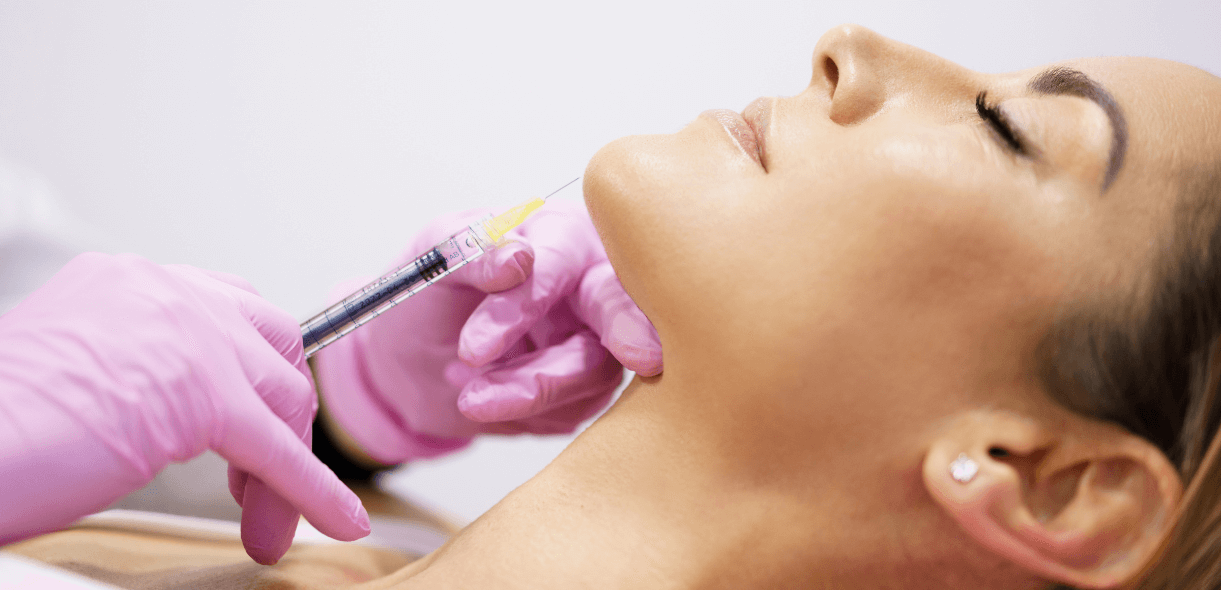Jaw Pain Got You Down? Understanding and Treating TMJ Disorders

Chewing your favorite food, yawning freely, even smiling – these everyday actions shouldn’t be a source of pain. Yet, for millions of people, jaw pain disrupts even the simplest activities. This discomfort often stems from a condition called temporomandibular joint (TMJ) disorder. If you’re one of those individuals struggling with jaw pain, understanding TMJ disorders is the first step toward finding relief. This blog post will delve into the complexities of TMJ, exploring its causes, symptoms, and various TMJ treatment options in Rocklin, CA.
Demystifying the TMJ: A Joint Under Pressure
The TMJ joint is a marvel of engineering. Located on either side of your head, where your jawbone connects to your skull, it allows your jaw to move smoothly in various directions. This enables essential functions like chewing, talking, and swallowing. However, the TMJ is a complex joint and can be susceptible to dysfunction. This dysfunction manifests as TMJ disorders, a broad term encompassing a variety of conditions that affect the jaw joint, surrounding muscles, and ligaments.
Unveiling the Culprits: What Causes TMJ Disorders?
The exact cause of TMJ disorders remains somewhat elusive, but several factors are believed to contribute:
Muscle Tension and Stress: This is a big one. Clenching your jaw or grinding your teeth (often unconsciously) can be triggered by stress, anxiety, or even concentrated activities like reading. Over time, this strains the jaw muscles and ligaments, leading to pain and tenderness.
Disc Issues: Imagine a tiny shock absorber in your jaw joint. That’s the disc! It cushions movement. If this disc gets displaced or damaged, it can cause pain and clicking or popping sounds when you open or close your mouth.
Arthritis: Just like any other joint, the TMJ isn’t immune to degenerative diseases like osteoarthritis. This can cause inflammation, pain, and stiffness in the jaw joint.
Injury: A blow to the face or accident can injure the jaw joint and surrounding structures, triggering TMJ dysfunction.
Misalignment: An improper bite (malocclusion) can be a culprit. When your upper and lower teeth don’t come together properly, it can put undue stress on the TMJ joint and lead to pain and dysfunction.
Recognizing the Signs: Unveiling TMJ Symptoms
TMD can manifest in a variety of ways. Here are some common symptoms to watch out for:
Jaw pain and tenderness: This can be a dull ache or a sharp pain, often concentrated around the jaw joint or radiating to the face in areas like the cheeks, forehead, or even down to the neck and shoulders.
Limited jaw movement: Difficulty opening your mouth wide enough to eat, yawn, or brush your teeth comfortably. You might also experience restricted side-to-side movement when chewing.
Jaw locking: This can be complete or partial, making it difficult or impossible to open or close your mouth entirely. In some cases, the jaw might become stuck in a partially open position.
Clicking or popping sounds: These noises may occur when opening or closing your mouth and can be accompanied by a feeling of catching or grinding in the joint.
Facial pain: Pain or tenderness that can be widespread across the face, ears, temples, and even down to the neck and shoulders.
Headaches: Frequent headaches, particularly tension headaches that feel like a tightening band around the head are often associated with TMJ disorders. You might also experience migraines.
Tinnitus: Ringing or buzzing noises in the ears, even in the absence of any external sound.
Exploring TMJ Treatment Options
TMJ disorders can cause a lot of discomfort, but the good news is there are many effective treatment options available. Depending on the severity and cause of your condition, dental professionals recommend a personalized approach that combines some of the following:
Self-care Techniques
- Relaxation Techniques: Techniques like meditation, mindfulness, and progressive muscle relaxation can help reduce stress and tension in the jaw muscles, which can contribute to TMJ pain.
- Heat and Ice Therapy: Applying warm compresses to the jaw can help relax muscles and ease pain, while cold compresses can reduce inflammation and swelling.
- Diet Modification: Eating softer foods and avoiding chewy or crunchy foods can help reduce strain on the jaw joint.
- Posture Correction: Maintaining good posture throughout the day, especially while sitting at a desk or using electronic devices, can help prevent further strain on the jaw.
- Splints and Mouthguards: These custom-made devices worn at night or during the day can help keep your teeth from touching and prevent teeth grinding or clenching. This can reduce pain, protect your teeth from damage, and improve jaw function.
Medication
Medications like ibuprofen or acetaminophen can help manage pain and inflammation in the jaw joint. In some cases, your doctor may prescribe stronger medications like muscle relaxants or anti-anxiety medications to address specific TMJ symptoms.
Physical Therapy
A physical therapist can teach you specific exercises to stretch and strengthen the muscles around your jaw joint, which can improve mobility and reduce pain. Techniques like massage and mobilization can help improve flexibility and reduce muscle tension in the jaw.
Injections
Injecting corticosteroids directly into the TMJ joint can provide targeted pain relief and reduce inflammation. In some cases, botox injections can be used to relax overactive jaw muscles and reduce pain associated with teeth grinding.
Conquering TMJ Discomfort
Living with TMJ pain can be frustrating, but it doesn’t have to control your life. By taking a proactive approach, you can find lasting relief and reclaim a life free from jaw discomfort.
Empower Yourself with Knowledge
- Understanding TMJ: Learn about the temporomandibular joint, its function, and the different types of TMJ disorders. This knowledge will empower you to discuss treatment options confidently with your healthcare provider.
- Identifying the Causes: Explore the various factors that can contribute to TMJ pain, such as teeth grinding, stress, and misalignment. Recognizing your triggers can help you develop preventive measures.
- Treatment Options: Discover the diverse available options for TMJ treatment in Rocklin, CA. This includes self-care techniques, medication, physical therapy, and mouthguards. There’s a personalized path to pain relief waiting for you.
Take Charge of Your Jaw Health
Early Diagnosis is Key: Don’t wait for the pain to worsen. Schedule an appointment with your dentist if you experience persistent jaw pain, clicking or popping sounds in your jaw, difficulty chewing, or facial tightness. Early intervention can prevent the condition from progressing.
Partner with Your Healthcare Professional: Open communication with your dentist or doctor is crucial. Discuss your symptoms thoroughly and work together to develop a treatment plan that addresses your specific needs and preferences.
If you’ve been struggling with jaw pain, understanding TMJ disorders is the first step to finding relief. While TMJ dysfunction can be frustrating, there are a variety of treatment options available. Remember, early diagnosis and intervention are key to managing TMJ and preventing further complications. If you suspect you have TMJ, don’t hesitate to consult a dentist or healthcare professional. They can help diagnose the underlying cause of your jaw pain and create a personalized TMJ treatment option in Rocklin, CA, to get you back on track to feeling your best.




